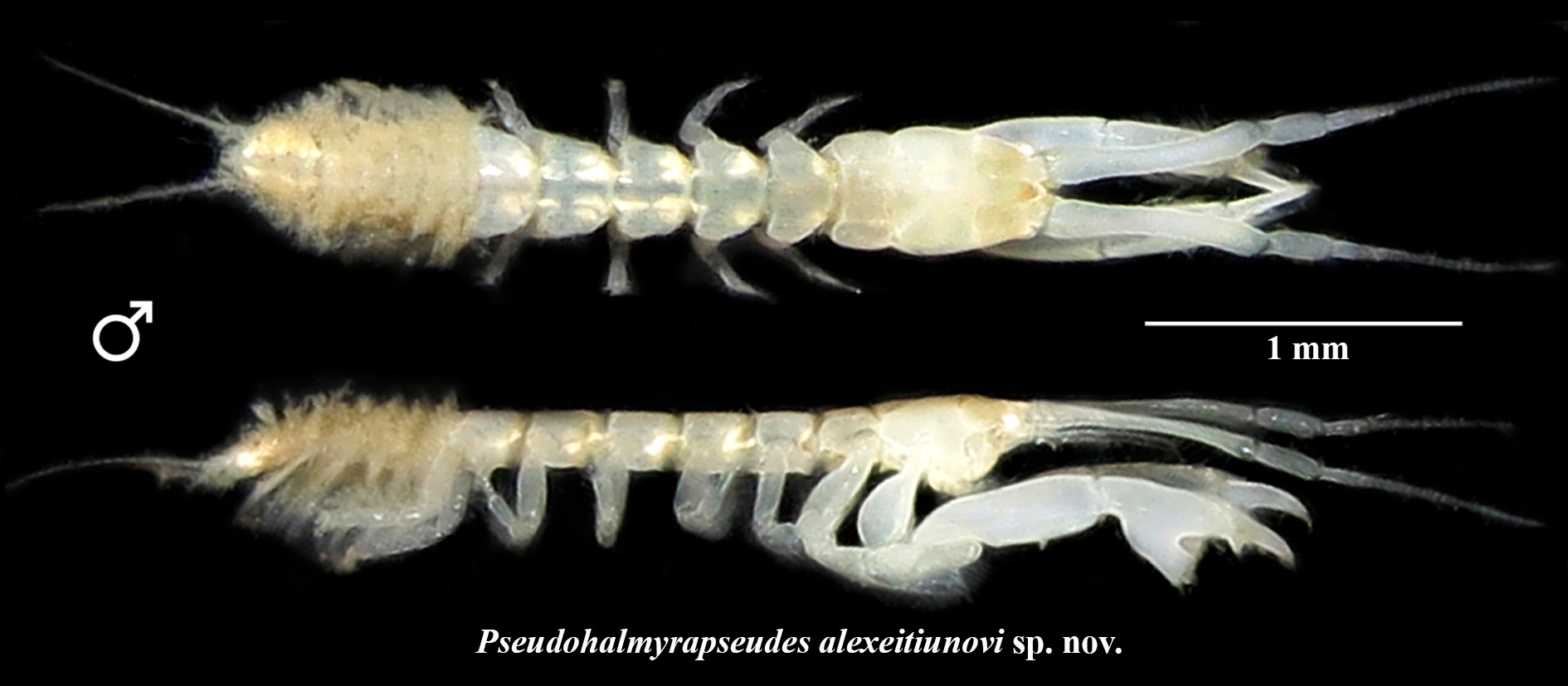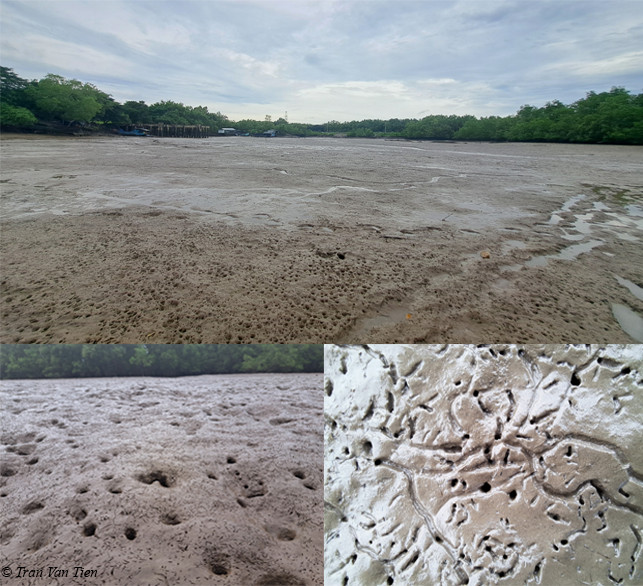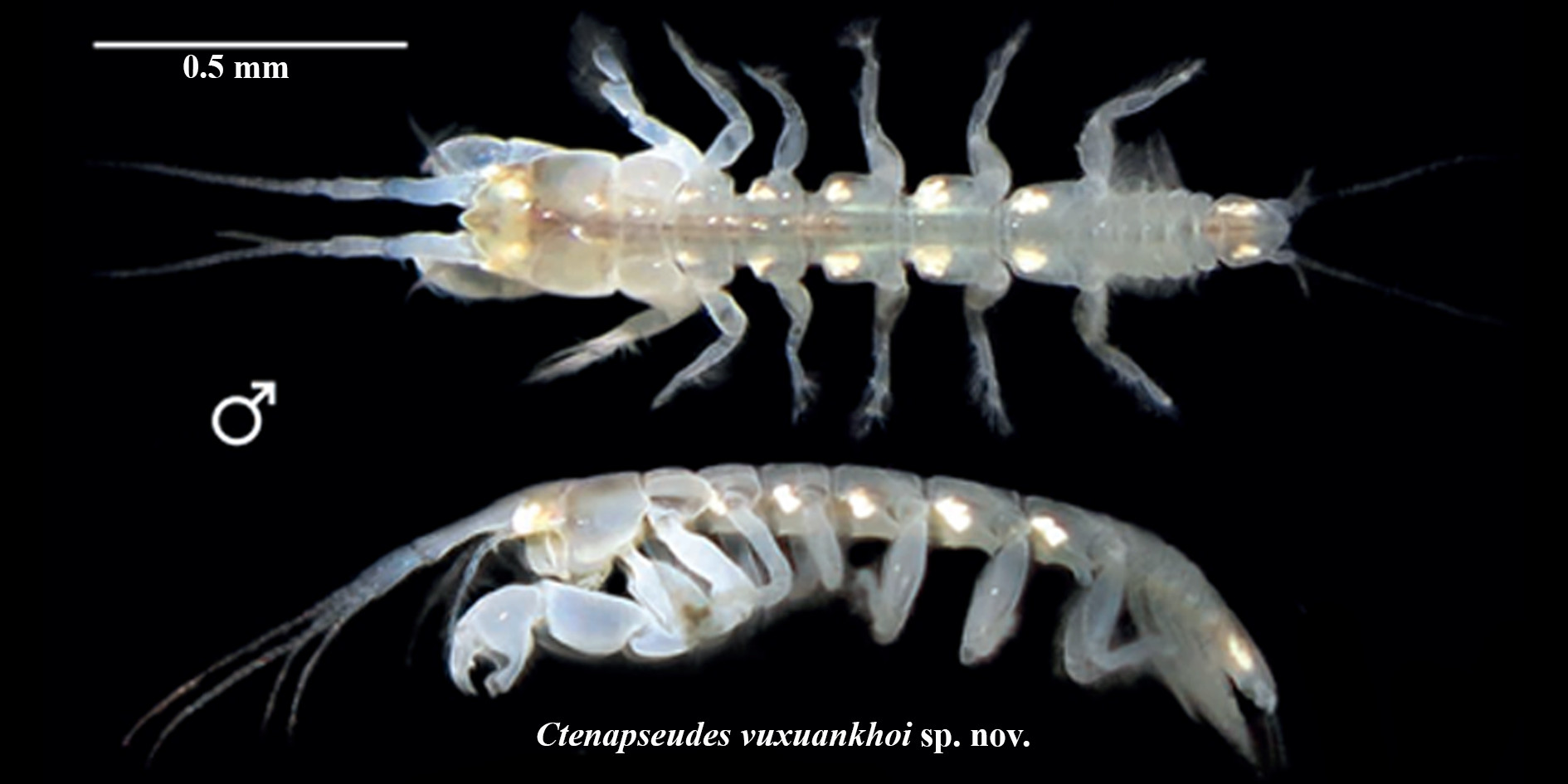Discovery of two new crustaceans in the Can Gio Mangrove Biosphere Reserve
12/07/2024In the Can Gio Mangrove Biosphere Reserve (Can Gio District, Ho Chi Minh City), two new crustacean species, Ctenapseudes vuxuankhoi (Figure 1) and Pseudohalmyrapseudes alexeitiunovi (Figure 2), belonging to the family Parapseudidae (Tanaidacea: Malacostraca), were discovered, described, and published. This is part of the research results from a project under the Science and Technology Research Program approved by the Coordinating Committee on the Joint Vietnam-Russia Tropical Science and Technology Research Center (VRTC), code E-3.4, task number 8: “Research on biodiversity and functional structure of organisms in floodplain and coastal ecosystems.” The studies were conducted in the Can Gio Mangrove from 2022 to 2023 by scientists of VRTC and the Institute of Ecology and Evolution A.N. Severtsov of the Russian Academy of Sciences.
Figure 1. Ctenapseudes vuxuankhoi, general dorsal and lateral views.
These two new species are relatively small in size. Ctenapseudes vuxuankhoi measures between 5.4 - 6.5 mm, and Pseudohalmyrapseudes alexeitiunovi measures between 3.8 - 4.5 mm. They can be easily distinguished from other species in their respective genera by their distinctive morphological characteristics. Pseudohalmyrapseudes alexeitiunovi can be differentiated from other species in its genus by the morphology of the male cheliped and the absence of setae on the merus, carpus, and propodus of the sixth pereopod. Meanwhile, Ctenapseudes vuxuankhoi is distinguished from other species in its genus by the characteristics of the antennae, maxilliped, cheliped, and pereopods. To date, there are four known species in the genus Pseudohalmyrapseudes and five in the genus Ctenapseudes worldwide, including these two newly described species.

Figure 2. Pseudohalmyrapseudes alexeitiunovi, general dorsal and lateral views.
Ecologically, the results obtained from the stable isotope composition δ13C/δ15N indicate that these two new crustaceans play a crucial role in the mangrove ecosystem as primary consumers feeding on organic matter, presumably derived from the leaves of the local mangrove. They also serve as food for higher trophic level organisms in the Can Gio mangrove ecosystem. These two new species are commonly found living about 1 cm below the mud surface in the tidal flat habitats of the Can Gio mangrove swamps (Figure 3).

Figure 3. The habitat of Ctenapseudes vuxuankhoi và Pseudohalmyrapseudes alexeitiunovi.
The two new species were named after Dr. Vu Xuan Khoi, the former chief of the Laboratory of Ecology in the Southern Branch of VRTC and Corresponding Member, Dr. Alexei V. Tiunov, Deputy Director of the Institute of Ecology and Evolution A.N. Severtsov in order to recognize and honor their significant contributions to biodiversity research and natural resource conservation within the framework of the VRTC's activities in Vietnam.
The research findings have been published in specialized journals on crustaceans and animal taxonomy: Zootaxa 5433 (3) on April 8, 2024, for the species Pseudohalmyrapseudes alexeitiunovi, and Arthropoda Selecta 33(2) on May 12, 2024, for the species Ctenapseudes vuxuankhoi.
Nguyen Van Tien (Southern Branch of VRTC)
Ngoc Nguyen translated










